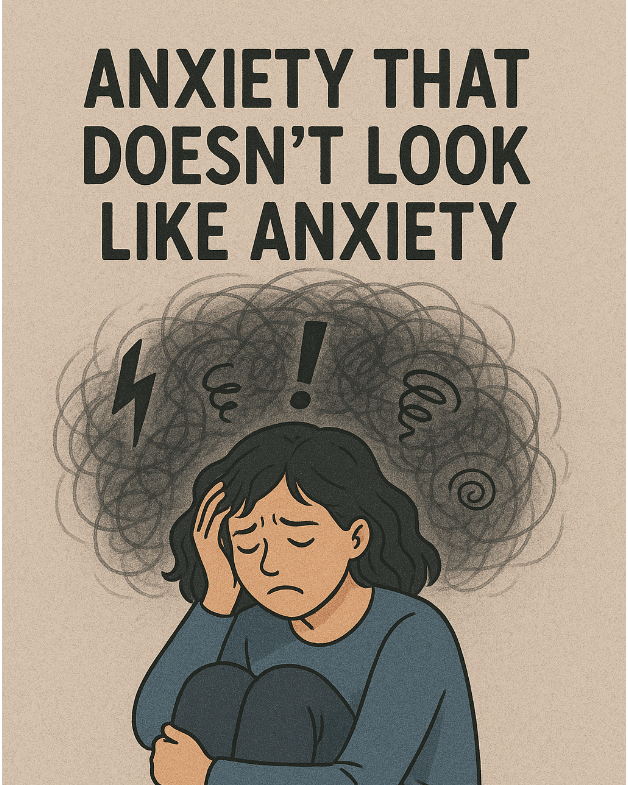








Most people imagine anxiety as shaking hands, heavy breathing or panic attacks. In reality, anxiety shows up in ways people don't connect to anxiety at all. Therapists across the United States are seeing more clients who say they aren't anxious, yet their behavior, lifestyle and stress patterns tell a different story.
This hidden version of anxiety is easy to miss because it blends into normal life. It feels like personality traits, habits or work style, not a mental health concern. That's why so many people stay stuck. They treat the symptoms instead of the root.
Below are the forms of anxiety that rarely get recognized. These are common in the US, especially among professionals, parents, students and people juggling several roles at once.
This is one of the most overlooked signs. Many people snap quickly, get annoyed fast or feel on edge all day. It looks like a short temper, but the real problem is an overwhelmed nervous system.
The body is overstimulated, so even small things feel threatening or frustrating.
If you analyze every text, every decision or every possible scenario before doing anything, that's anxiety. It feels like you are being careful or responsible, but it is actually your mind trying to protect you from imagined danger.
Overthinking is one of the biggest anxiety indicators therapists see in the US today because of social pressure, fear of judgment and fast paced work culture.
People often call perfectionism a strength, but most of the time it is anxiety in disguise. You are scared of being wrong, failing or disappointing someone. So you try to control every detail to avoid negative outcomes.
Insight: High achievers in the US often struggle with this because the culture rewards productivity and performance but ignores emotional cost.
This is not kindness. This is fear of rejection.
If you go out of your way to keep the peace, avoid conflict or make sure everyone is comfortable while you are drained, that is anxiety running the show.
You are trying to prevent discomfort by managing other people's reactions.
Some people fill their days with tasks, plans, goals and responsibilities because slowing down feels unsafe. The silence makes them anxious. So they stay busy to avoid feeling.
This is common among adults who grew up in chaotic households or environments with high expectations.
If making even simple decisions feels stressful and heavy, anxiety is usually behind it. The fear of making the wrong choice can freeze you. You keep waiting for the perfect answer because you don't trust yourself.
These often get treated as medical issues, but for many people they are stress responses.
Anxiety is not always emotional. Sometimes it becomes a habit. Your brain and body stay in a protective mode because they think danger is always around the corner.
For many people in the US, this comes from:
When the body stays in alert mode for years, anxiety becomes part of your identity. You stop noticing it because it feels normal.
Here is what actually helps. No unrealistic advice. No clichés.
Stop calling these behaviors personality traits.
Name them for what they are.
This brings awareness and cuts denial.
Slowing down reduces automatic anxious behavior.
Too much stimulation keeps anxiety alive.
Your body needs signals of safety.
These help the nervous system settle.
Hidden anxiety is hard to see on your own.
A therapist helps you connect the dots, understand your triggers and build strategies that actually work long term.
Anxiety doesn't always look like fear or panic. Sometimes it shows up as perfectionism, irritability, overthinking or people pleasing. When you understand the real signs, you can finally work on the root instead of fighting the symptoms.
Remember: You don't need to wait for your anxiety to get "bad enough." You can start fixing the hidden patterns now.
Whether you're looking to strengthen an already healthy relationship or address specific challenges, couples therapy can provide valuable tools for growth and connection. Contact us to learn more about our couples counseling and relationship therapy services.
If this article resonated with you, share it with others who might benefit from these insights.